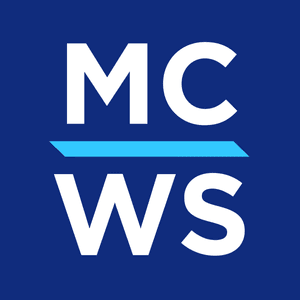Note: This information is from 2020 but much has changed since then. Please be sure to discuss your unique financial situation with your McKinley Carter Advisor or another trusted professional.

Social media has revolutionized marketing and how we “consume” information. For nonprofits, harnessing social media can make an enormous impact.
Interested in telling your story? Consider that 3.5 billion people or 45% of the world’s population now use social media according to Hootsuite, a social media scheduling tool. Does that get your attention? Social media platforms have revolutionized not only the marketing space, but how consumers “consume” their information. For nonprofits, harnessing the power of this tool to tell their story can make an enormous impact.
Why Social Media is perfectly tailored for nonprofits
Social media enables a nonprofit to efficiently reach a very targeted audience at a very low cost. The inherent “personal” nature of social media is particularly valuable for nonprofits with a compelling story to share. Nonprofits can use a video or infographic to dramatize their mission better and faster than ever before and avoid waste. Today more users would rather press the DONATE button to send a $100 donation than attend a rubber chicken fundraiser. And while there is still a place for traditional marketing methods, being “social” makes your marketing efforts work that much harder.
Entering the “Social Space” – Four Essential Tactics
It all begins with a laser focus on your target audience and objective; essentially, what you hope to accomplish. Whether attracting donors, volunteers, or clients, or building reputation and awareness, defining that objective and target are essential to your plan. With these in hand, four key social media tactics can provide the path to a successful overall social media strategy.
1. Create Compelling Content that Tells your Story
In concert with your website, social content works to engage and entice your target audience with information that is relevant and compelling to them. Over time, frequent reinforcement of content that describes your mission in action, such as your success stories and achievements, creates authority for your brand. While there is no magic frequency, posting content 2-3 times per week on your preferred platform is a good start. Keep it short and sweet, as users are more likely to scan vs. read in-depth pieces, and always include a link back to your website where users can learn more. The ultimate goal is to create “conversions” whereby your audience is sufficiently moved by your mission to engage and take action (e.g. donate, volunteer, register for an event, etc.)
Consider this example:
An educational provider targeting parents of special needs children dramatizes its message of hope through stories of children affected by their services. Utilizing photos and videos of success stories reinforces their authority in the area and has resulted in dramatic increases in donations and clients.
2. Select the Right Social Platform(s) for your Audience
With so many choices, knowing where your audience is “social” is key. Most organizations use a mix of social media with a lead “horse” that closely reflects their target. The following profiles and suggestions on usage provides some basic perspective:
- Facebook: Personal sharing of information as well as news and entertainment features with a focus on photo, video and event promotional content. Facebook also offers a robust job posting functionality. By far the most popular platform, there are 2.2 billion active mobile FB users every month. More than half of Facebook users are in the 25-55-year age group.
- Twitter:A news and conversation tool with a target audience over 21 but under 40. A monthly basis, 330 million active users with 500 million daily tweets.
- Instagram:A highly visual network for images and videos (100 million uploaded daily) with 500+ million individual users and 25+ million business users every day. Sixty-three percent of Americans use Instagram daily.
- LinkedIn:Professional network tool for sharing professional content and for posting new employment opportunities. There are a total of 675 million LI users. More than 70% are outside of the U.S.
- Pinterest:Highly visual network often used by creative types of all ages to find inspiration. Pinterest allows users to visually share, and discover new interests by posting (known as 'pinning' on Pinterest) images or videos to their own or others' boards (i.e. a collection of 'pins,' usually with a common theme) and browsing what other users have pinned. There are 300+ million active monthly users. 70% of Pinterest users are female.
- YouTube: Video sharing service where users can watch, like, share, comment and upload their own videos. 30 million active daily users; 5+ Billion videos watched daily. 62% of YouTube users are males; 62% of businesses use YouTube.
- SnapChat: Popular messaging app that lets users exchange pictures and videos (called snaps) that are meant to disappear after they're viewed. 210 million active daily users; 75% of users are under age 34. 90% are between ages 13-24. About 400 million snapchat stories are created daily.
Suggested usage:
- Is your message focused on targeting donors? You may consider Facebook, LinkedIn, and Instagram.
- Building authority for your brand with professional announcements and awards? LinkedIn
- Trying to recruit new staff? LinkedIn is ideal for new employment opportunities.
- New clients or volunteers? Consider Facebook, Twitter, and Instagram dependent on your age goal.
- Does your message lend itself to visual presentation to capture the users? Consider serving content via Pinterest or Instagram.
- Do you have an event or donors video? Post it on YouTube and share to your website.
- Did your local newspaper or news station feature your organization? Share on Facebook, Twitter, Instagram, and LinkedIn to build awareness.
- Trying to boost readership for your newsletter? Consider pushing a “subscribe” call to action on Facebook, Twitter and LinkedIn.
- Tag supporting organizations and local influencers in your post and photos where applicable. Use hashtags to improve your visibility on searches. Tag your city or local municipalities to create a buzz about your mission.
Consider these examples:
A nonprofit that provides childcare for parents in crisis uses Facebook and Instagram as their “go to” social channels to increase their brand awareness and drive donations.
A nonprofit art education center interested in reaching adults 25 + and families with children uses Facebook as their core platform with the addition of Instagram and Pinterest given the visual nature of their offerings.
A Food Bank takes advantage of Twitter and its “news” focus to communicate pertinent impact of a change in policy that might affect a food bank’s funding and generate awareness.
3. Measure Performance
Once you have begun to test the social media world, developed your message and selected your vehicle, understanding what is working and, more importantly what is not working is the key to success. Analytics tools that accompany all social vehicles provide valuable insight into what is working. On the surface, likes and shares, while just a beginning, provide an important currency in building your brand. Key Performance Indicators will vary based on your objectives, but they typically fall into a few of the following different categories:
- Awareness — Impressions, Views, Reach
- Growth — Followers, Likes, Subscribers
- Engagement — Reactions, Clicks, Comments, Shares
- Conversions — Phone Calls, Event registration, financial contributions, recruitment
4. Expand your Audience
Now with results and content plan or calendar in hand, it is time to refine your efforts including considering how you might expand your number of followers within your target audience parameters. A few options include:
- Encourage your staff and your current users to share, like and tag people by reaching out to families and friends.
- Consider reciprocal links with organizations or referral partners with whom you may share audiences.
- Build or join an online Facebook or LinkedIn group or communities that share your causes.
- Tap local influencers in your area of interest such as personalities, leadership or officials that believe in your message.
- Explore paid ad options like Facebook Boosting to reach new people that fit your target demographics for age, interests, geography, etc.
- Create contests or polls to promote engagement or interest in your mission.
The Final Takeaway
While getting into the social game may be a bit daunting, the ideas shared above are just a few examples on how you can begin or improve your nonprofit’s social media strategic plan. Importantly as you begin, track your results to understand what is working so you can repeat the successes. With results in hand, you will gain comfort in testing new ideas, allowing this very valuable tool to work for you, building lasting and productive relationships with your audience.
Source: http://www.omnicoreagency.com
